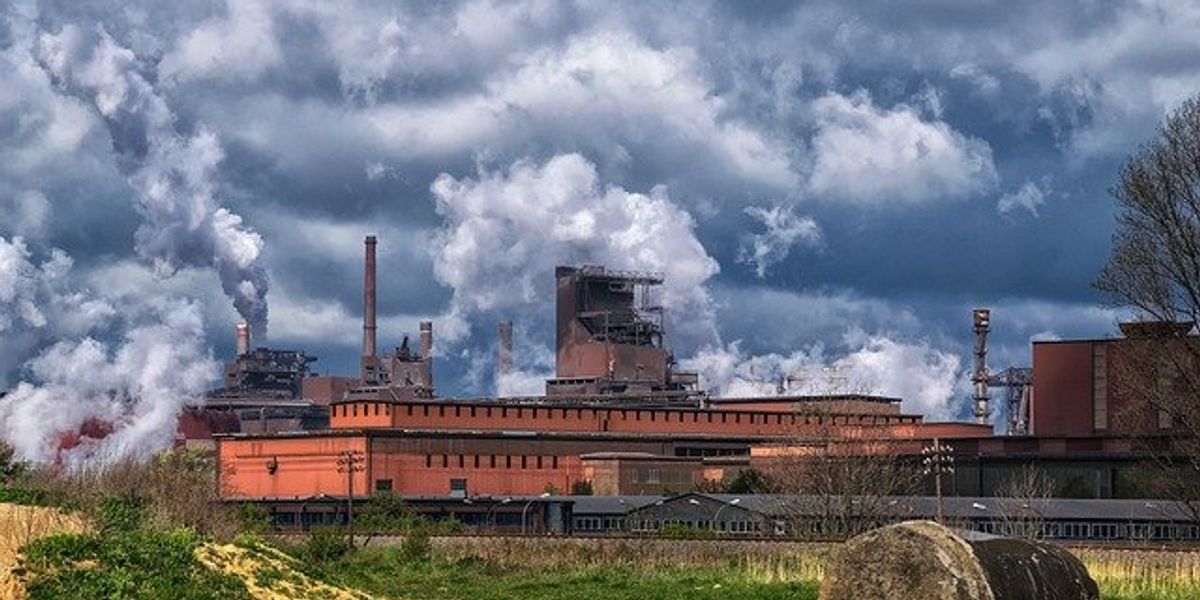economics_financial_turbulence
When borders close.
The new age of deglobalization is on, and it is likely to last.
When Borders Close
By RUCHIR SHARMANOV. 12, 2016
Continue reading the main storyShare This Page
Share
Tweet
More
Save
Photo
Credit James Leynse/Corbis via Getty Images
The age of globalization generated great prosperity. As the flow of goods, money and people across borders surged, millions benefited. But the elite gained the most. And as inequality rose, it stirred pockets of fierce resentment among those left behind. When the great shock came, the discontented turned to nationalist firebrands, who promised to impose controls on free trade, global banks and immigrants. Globalization stalled. A new age of deglobalization hit full stride.
That great shock came in 1914, with the outbreak of World War I, and it ended an extraordinary four-decade period of rising migration and trade. But that era provides clear parallels to the globalization boom that gained momentum in the 1980s and stalled during the financial crisis of 2008. Today globalization is once again in retreat. Populists are on the march, as evidenced by Donald J. Trump’s stunning victory last week. They have already won control of the government in Britain and gained momentum in Italy, France and Germany.
It is not clear how Mr. Trump, who has called for protectionist measures and tighter borders, will govern. But it is clear that the open world order is breaking apart. The new age of deglobalization is on, and it is likely to last.
National economies move from boom to bust in cycles that last a few years, but globalization is different. At least since Genghis Khan secured travel along the Silk Road, the flow of goods, money and people across borders has advanced and retreated in decades-long waves. The retreat that began in 1914 continued for three decades, weakening the world economy and feeding the resentments that erupted into World War II. The retreat that began in 2008 is still gaining strength, and it is time to recognize the likely fallout, which is slower growth, higher inflation and rising conflict.
Continue reading the main story
ADVERTISEMENT
Continue reading the main story
The parallels between the two booms are striking. The recent advance of globalization was driven by changing technology — including container ships and the internet — and new rules that opened the world’s most populous country, China, to commerce. Before 1914, steamships and the “Victorian internet,” the telegraph, as well as novel rules that opened the 19th century’s largest economy, Britain, to imports, drove globalization. By the eve of World War I, the world was in some ways as connected as now. Measured as a share of the population, immigration to the United States was three times greater in 1914 than at any time since.
The social tensions generated by rapid globalization in the early 20th century also ring familiar. The share of income going to the richest 1 percent of Americans rose steadily from 1870 to a peak of nearly 20 percent in the late 1920s, as global commerce created a “gilded age” plutocracy. Popular resentment spread, and politicians began working to seal the borders, particularly after 1929, when the economy crashed into the Great Depression.
America turned inward. Congress passed the sweeping Smoot-Hawley Tariff Act in 1930, prompting a global trade war. Measured as a share of the world economy, trade peaked at 30 percent in 1914, and fell to a low of 10 percent in 1933. That year, Congress passed the Glass-Steagall Act, which barred big banks from the investment business. The movement of money from country to country slowed to a trickle in the 1930s and 1940s.
The United States also virtually shut down immigration in the early 1930s, when the influx of people declined to a few tens of thousands, down from more than a million annually before 1914. As many as one million Mexicans went home in this period, with 80,000 deported by the federal authorities and many more scared off.
Closing the borders reduced competition and commerce, prolonging the Depression. In the United States, populists were fringe figures promising to “share the wealth” and chanting, “America First.” But in Europe and Asia, they took power as the militarist autocracies that started World War II.
After the Axis powers were defeated and the victorious democracies began rebuilding an open world order, it took decades for the flow of trade, money and people to regain momentum. Global trade did not recover to its 1914 peak until the 1970s, and capital mobility — the scale and ease of money flows — did not recover until the 1990s. Once these flows gained speed, however, they thundered along right up to the financial crisis.
Today, 2008 looks to be as clear a turning point as 1914. With global demand weak, and many nations erecting import barriers, trade is slumping. Measured as a share of global gross domestic product, trade doubled from 30 percent in 1973 to a high of 60 percent in 2008. But it faltered during the crisis and has since dropped to 55 percent.
The flow of capital — mainly bank loans — is retreating even faster. Frozen by the financial crisis and squeezed afterward by new regulations, capital flows have since slumped to just under 2 percent of G.D.P. from a peak of 16 percent in 2007.
The flow of people is slowing, too. Despite the flood of refugees into Europe, net migration from poor to rich countries decreased to 12 million between 2011 and 2015, down by four million from the previous five years. Between 2009 and 2014, the number of Mexicans leaving the United States outnumbered new arrivals by 140,000, and that was before Mr. Trump’s first anti-Mexican tirades.
In an echo of the 1930s, the slowing of trade, global investment and migration are further weakening the global economy. There are many reasons to expect that this new age of deglobalization will last, as the postwar order is under assault from both popular autocrats in emerging powers like Russia and China, and populist candidates in Western democracies.
The recent trade boom was fueled by relatively simple deals that cut import tariffs. But trade deals have become more complex, and now take much longer to complete. At the same time, the world’s major economies have imposed hundreds of protectionist measures since 2008, led by India, Russia, China and the United States. And once such protectionist walls spring up around one industry, they tend to grow and spread to other industries.
Changes in China’s economy will further slow trade. When China opened up in the 1980s, its vast population turbocharged global trade almost overnight. Nations all over the world prospered by supplying raw materials and parts to plants in China, and later in countries like Poland and Mexico. Before 2008, much of the global trade boom involved intermediate goods traveling within these supply chains. But this trend has reversed. Supply chains are contracting, particularly as China moves to make its economy less dependent on trade, and its factories learn to make more parts at home.
Recently, the International Monetary Fund and other institutional bulwarks of the postwar order have mounted a defense of globalization. They point to research blaming automation and other forces unrelated to globalization for middle-class job losses. But the technocrats are missing the political reality: The tide has turned against immigrants and trade. It is time to recognize the implications of deglobalization.
During and between the two world wars, the anti-global agenda reduced competition and worsened weak economic growth with rising inflation. Today, populists are again calling for protecting domestic industry and sharing wealth, which could have the same impact.
Redistributing wealth within nations could have the salutary effect of narrowing the income gap between individuals. But more protection could widen the wealth gap between nations. Since World War II, few nations have escaped poverty without a huge lift from exports, and rising trade barriers will make it harder for developing countries to do that. The economic advantage is shifting from export-driven economies, such as South Korea and Taiwan, to those that rely on large domestic markets, such as India and Indonesia.
More worrisome is the geopolitical fallout from closing borders. As the open global order has faltered since 2008, the number of democracies has stagnated. More than 100 of the countries tracked by Freedom House have shown a decline in freedom since then (some 60 saw gains), as democracies have grown more xenophobic and autocracies more repressive. At a time when approval ratings are plunging for political leaders worldwide, a combative few are maintaining their popularity by playing the nationalism card, including in Russia and China.
These governments are increasingly willing to close borders and to project military power. Though hardly global threats on a par with the Axis powers before World War II, they pose challenges on three main fronts, with China pushing into the South China Sea, Russia testing Europe’s borders and Iran’s proxies spreading across the “Shiite crescent” in the Middle East. Regions facing these newly adventurous powers are racked with tension, made worse by perceptions that the United States has been in retreat since 2008. While global military spending was flat worldwide for much of the last decade, it is up 75 percent in East Asia, 90 percent in Eastern Europe and 97 percent in Saudi Arabia.
Sign Up for the Opinion Today Newsletter
Every weekday, get thought-provoking commentary from Op-Ed columnists, the Times editorial board and contributing writers from around the world.
Enter your email address
Sign Up
Receive occasional updates and special offers for The New York Times's products and services.
SEE SAMPLE MANAGE EMAIL PREFERENCES PRIVACY POLICY
World War I shattered the hope that an increasingly interconnected world would render armed conflict between nations obsolete. Similar hopes surfaced in recent decades. But the connections are fraying, tensions are spreading and my-nation-first populism is gaining, including in the United States. During the campaign, Mr. Trump called for toughening border security, renegotiating or blocking major trade deals, and cutting support for allies the United States has backed since 1945.
Mr. Trump may not follow through on all these proposals, but his direction is clear. The global movement of goods, money and people is likely to continue slowing. The lesson of the past is that just as night follows day, deglobalization follows globalization — and can last just as long.
Ruchir Sharma, author of “The Rise and Fall of Nations: Forces of Change in the Post-Crisis World,” is chief global strategist at Morgan Stanley Investment Management.
Bust hits America’s cowboy coal basin after 40 years of boom.
Wyoming cash cow is hobbled by three bankruptcies, 1,100 job cuts.
The last bastion of the American coal industry has been breached.
The bust that’s devastated Appalachia for five years has finally reached cowboy country’s Powder River Basin. For four decades, the 300-mile corridor stretching from Wyoming north into Montana thrived on the strength of the cleaner low-sulfur coal carved from its vast plains. No more.
After producing more than 400 million tons every year since 2004, the region’s output this year will drop by about 100 million tons, analysts say, undercut by cheap natural gas, growing utility use of renewables and new environmental rules. Since last fall, 1,100 workers, or 17 percent of the mining workforce, have lost their jobs, leaving the industry and the economy reeling.
“Has the Powder River Basin ever had a real bust? Not really,” said Matt Preston, a research director at the consulting firm Wood Mackenzie Ltd. “This year is a total collapse.”
Through Sept. 10, coal output in Wyoming, the biggest U.S. producer, is down 25 percent from a year earlier, while Montana is down 26 percent, according to the U.S. Energy Information Administration. Ted O’Brien, chief executive officer of Doyle Trading Consultants in New York, estimates that the output may drop to 332 million tons this year, from 418 million tons in 2015. Preston is even less positive, foreseeing a possible slide to 307 million tons.
The drop comes after a year in which three producers dominant in the region — Peabody Energy Corp., Arch Coal Inc. and Alpha Natural Resources Inc. — filed for bankruptcy. And it’s causing the basin’s residents, long accustomed to the booms and busts associated with oil and natural gas, to wonder if coal, a reliable cash cow for decades, may ever regain its clout.
The changes “have caused folks to think about ‘Economy 2.0’ and how do we get there, conversations that I’ve never actually had in Wyoming,” said Shannon Anderson, a lawyer for the Powder River Basin Resource Council, a community organizing group. “People are starting to think about it in a way that I think folks have never thought of it before.”
For Anderson, the issue came into sharp focus in the spring, she said, as she drove north of Gillette, the hub of the coal region. At one spot, she expected to see a sight that had been a standard for a generation in the area: freight trains lined up, laden with coal. Instead, “there wasn’t a single train,” she recalled. “It was somewhat shocking.”
The effect is being felt statewide. In 2012, when miners produced 401 million tons of coal, taxes on that output generated almost $1.3 billion in revenue to statewide coffers at every level of government, or about 11 percent of their total, according to a study reported in February 2015 by the Center for Energy Economics and Public Policy at the University of Wyoming in Laramie.
In June, Wyoming Governor Matt Mead proposed $249 million in budget cuts for 2017 and 2018, saying the state’s revenue could fall up to $510 million short of projections. In August, he sent a letter to state agency heads asking them to find ways to do without even more money.
“It’s hard if you’re in the public sector,” said Robert Godby, a professor of energy economics at the University of Wyoming and an author of the economic study.
It’s hard, too, if you live in Gillette, which in recent decades has invested much of the coal wealth into some of Wyoming’s nicest public schools, community centers and other amenities. “If you’re in Gillette now, you’re seeing so many houses on the market — people leaving if they can, people wondering where they can go,” Godby added.
Coal has a long history in the Powder River Basin. With Appalachian coal closer to the big city populations of the northeast, though, the region early on mostly served its surrounding area.
That changed in the 1970s, when approval of the Clean Air Act combined with cheaper shipping rates from railroad deregulation to smooth the way to eastern markets. Before long, power plants as far away as Georgia were deciding whether to install expensive “scrubbers” to reduce sulfur dioxide under the new clean-air rules, or buy the Powder River Basin’s suddenly cheaper low-sulfur coal. Production soared.
The basin offers two key advantages. Having developed under fresh-water conditions dating to the age of dinosaurs, the basin’s coal has a sulfur content that’s less than a fourth of the variety that formed even earlier beneath salt water in much of competing Appalachia and Illinois.
Secondly, while the region’s coal has less carbon per ton than Appalachia’s product, forcing plants to burn 50 percent more to generate the same electricity, it makes up for that with its sheer abundance. The coal is located close to the surface, eliminating the need for deep mines. Instead, the region depends on cheaper open-pit mining, using hulking excavators.
Powder River “was just booming — 40 straight years,’’ Godby said. “The best way to forecast output was to use a straight line, linear and up.’’
Now, though, the direction of that line has changed, and industry executives and analysts have big concerns about the future.
Cloud Peak Energy Inc. — one of the region’s only publicly traded miners that hasn’t declared bankruptcy — has responded by reducing headcount, cutting overtime and accepting $18.8 million in buyouts from three utility customers that wanted out of contracts covering 3.9 million tons of coal shipments this year.
“Utilities are continuing to delay their contracting activity for next year as they monitor their stockpile levels and natural gas prices through the summer,” said CEO Colin Marshall, speaking on the company’s second-quarter earnings call.
Right now, U.S. utilities have Powder River Basin coal stockpiled for more than three months of use, about twice as much as normal, according to Doyle Trading’s O’Brien. When they finally work through that in 2017 and start looking for more, they may discover that the Powder River Basin won’t be able to produce the fuel fast enough.
With underground mines, companies can quickly respond to increased demand from utilities just by adding extra shifts. Not so in the Powder River Basin, where the massive shovels and trucks used to scoop out hundreds of tons of earth at a time could take as long as six months to get up to speed, O’Brien said.
At the same time, the Obama administration’s Clean Power Plan could end the advantage held by the basin for decades. More and more power plants have installed scrubbers, reacting to tighter regulations for mercury and other pollutants.
“The big fall-off, in our view, is going to come where the big run up was — primarily the Powder River Basin,” said Howard Gruenspecht, deputy administrator of the Energy Information Administration, speaking at a Columbia University coal event.
Godby, the University of Wyoming professor, has been grappling with similar thoughts.
“In the five stages of grief, we’re past denial,” he said. “Now we’re into anger, depression and bargaining — and the bargaining is trying to figure out what the new normal is and how to make this work.”
From market disruption to clean energy: ‘Energy 2030’ iSee Conference.
The annual iSEE Congress focused on how to improve energy efficiency and renewable energy to meet future energy needs. Here are six takeaways:
On Sept. 12, the Institute for Sustainability, Energy and the Environment at the University of Illinois held its annual iSEE Congress at the Alice Campbell Alumni Center. The conference focused on how to improve energy efficiency and renewable energy to meet future energy needs. Here are six takeaways:
United States electricity market ready to be disrupted
The United States’ electric grid is inefficient, congested and aging, said K.R. Sridhar, the founder and CEO of Bloom Energy.
And he thinks that means there is opportunity.
By 2020, the electricity market is projected to be valued at $4 trillion, and there is tremendous unmet need, even in developed countries like the United States, Sridhar said.
“This is the mother of all markets,” he said. “It’s highly inefficient and ready to be disrupted.”
Sridhar wants to be the one to do the disrupting.
Sridhar, a University of Illinois alumnus, worked at NASA from 1994 to 2001 on a project to find ways to use electricity to create oxygen to breathe and hydrogen to power vehicles on Mars.
After leaving NASA when his mission got canceled, he decided to reverse the process and created the Bloom Box, a fuel cell power generator that can take input fuels, like ethanol, methane or natural gas, run them through a stack of fuel cells and produce electricity without burning.
The box has been dubbed “holy grail” of clean energy.
Sridhar projects that the box could be brought into every house one day, allowing families to generate their own electricity.
This could also help solve a problem that billions of people in developing countries lack access to reliable electricity.
Sridhar, a native of India, spoke about the lack of reliable, clean energy across the world.
“Access to electricity is a human right. How do you bring that access and affordability to every human on this planet?” he said.
He said it is important for people across the world to be able to control their destiny when it comes to electricity, rather than rely on flawed companies and governments.
As he often does, Sridhar avoided specific questions about his company and its technology.
Side note: Google, Yahoo, Wal-Mart and eBay, are among its customers.
Instead, Sridhar said that the strides the company has already made make him confident that fuel cells like these will become a reality.
Miscanthus: A crop for the future
Instead of rows upon rows of corn and soybeans across the Midwest, Evan DeLucia sees a future with another crop mixed in: miscanthus, a tall perennial grass that takes three years to establish but afterward could be harvested annually for biofuel production.
DeLucia, a plant biology professor at the University of Illinois, said that corn and soybeans are a net source of carbon dioxide to the atmosphere, meaning they contribute to climate change.
But different alternative crops could be used for biofuels and as a source to help counteract greenhouse gas emissions.
In recent years, a push for renewable fuels has led up to 40 percent of corn grown in Illinois to be used for ethanol production.
DeLucia said that by replacing the corn used for ethanol with miscanthus, the Midwest could become a net-negative for emissions, even with the rest of fields maintaining their current use.
“There is enormous potential there,” DeLucia said. “We’re not really displacing the food supply. That displacement has already happened.”
He said that in addition to their use as biofuels, these crops can help reverse climate change.
“The bottom line is that the land-use change associated with bioenergy crops is likely to have a strong net cooling effect on the atmosphere,” DeLucia said.
Ethanol a benefit for the future for other biofuels
David Zilberman, an economics professor at University of California Berkeley, said that the increased of ethanol from corn has been a very positive thing for the future of biofuels in the United States for a number of reasons.
First, it raised the demand for crops, which is good for farmers. It also provided a framework for how infrastructure for these new fuels could be implemented.
“It showed you that you can move form a fossil fuel to a renewable in a reasonable way,” he said.
Zilberman said that both oil companies afraid for their bottom-line and environmentalists wary of GMOs threaten progress to implementing biofuels.
Zilberman said that people have a vision of sustaining small farmers in developing countries, but “small farmers are poor ones,” he said.
For significant progress to be made in improving yields in these countries, technology must be implemented on a widespread level, which is expensive and easier to do when farming more land.
GM’s top fuel guru: Increased efficiency in the works
In 2050, General Motors cars will likely look a lot like the Chevrolet Volt and upcoming Bolt and many likely won’t have drivers, said Dr. Coleman Jones, GM’s Biofuel Manager.
Already, GM is looking at improving engine efficiency, making cars lighter where possible, making more and better hybrid and electric car models, he said.
Jones said that vehicles use about 7 percent of their fuel while idling, and that GM will likely implement a stop-start technology, where cars will automatically shut off when parked at a red light to conserve gasoline.
He said he sees driverless cars in the future, which could possibly help decrease total miles driven – the biggest measure of vehicles’ impact on the environment, no matter how efficient cars are.
“(If we want to make an impact), we need to address total miles driven,” Jones said. “There’s more people, there are more people driving and they’re driving more places.”
He said that the U.S. Department of Energy is looking at whether there are ways to improve fuels used to power engines and whether there would be effective fuels with low carbon contents.
If they determine there are, GM will be ready, he said.
“If we know these fuels are coming, we can design to it,” he said.
Clean Power Plan not enough
In order for the United States to meet the goals set for itself in reducing renewable energy, more policies will have to be implemented, said Madhu Khanna, a University of Illinois agricultural economics professor.
Khanna said current policies, whether its state-led plans or the Clean Power Plan, don’t have the teeth necessary to reduce emissions to meet their goals.
Khanna praised the Clean Power Plan as “the most promising policy we have” but said it will likely only reduce greenhouse gas emissions in 2030 about 26 percent from 2005 levels; the plan’s goal is to reduce emissions 32 percent.
The Clean Power Plan would likely make electricity about 22 percent renewable energy, meaning the majority is still fossil fuels.
One problem is that current policies only address either carbon emissions or renewable energy requirements, Khanna said.
But in order to have a positive impact on the environment, there will need to be policies that do both.
Electricity storage needed for future renewable energy
New wind turbines and solar panels are being constructed every day, but in order for clean energy to be a significant force in the future, electricity storage must improve, said George Gross, a University of Illinois electrical and computer engineering professor.
“It’s very difficult to tell the wind to blow when we want it to blow. It’s also very difficult to make the sun shine when we want it to shine,” Gross said.
Many states have future requirements for clean energy, led by Hawaii, which has pledged to use 100 percent clean energy by 2045.
Gross said in order for states to meet their renewable energy goals, storage will have to improve.
After a natural gas leak in 2013, California mandated utility companies to install a total of 1,325 gigawatts of storage by 2024, enough to provide about 2 percent of the state’s peak one-hour demand during the summer.
Gross said that there are a number of projects in the state currently working to develop better ways to store clean energy, and that in order for energy to be effectively stored, storage must get cheaper than it currently is.
Gross said that Tesla has led the pack on storage, and recently, Tesla was awarded a bid to build a battery storage facility that can store up to 80 megawatt hours of energy.
“California is a very important state, and it’s always at the forefront of development,” Gross said.
Academic: Resilience needed with coming oil crash.
The premise Richard Heinberg's one-hour talk and following Q & A was that community resilience, an adaptive cluster of strategies, ways of thinking and acting, will be key to successful human response to anticipated climate change and resource market-related disruptions.
Richard Heinberg, an American journalist, educator and a senior fellow with the Post-Carbon Institute, spoke last Thursday to a crowd of about 150 Green Mountain College students and interested local residents. His talk was “The Case for Resilience,” and his subject was moving toward a post-carbon society, one that no longer depends on cheap oil-based energy.
Heinberg’s area of expertise is responding to climate change and economic challenges for industrialized nations in a post oil-dependent era. Among commentators on environmental matters, Heinberg’s bent is the practical. He is at least 13 times published with non-fiction books about moving from a carbon-based society to one based on resilience and sustainable practices, and has delivered hundreds of lectures in 14 countries, including one he gave to the European Parliament.
Dr. David Christensen of Green Mountain College remarked in his introduction that Heinberg was an advisor to GMC as it created online graduate programs in environmental sustainability.
The premise of his one-hour talk and following question-and-answer session was that community resilience, an adaptive cluster of strategies, ways of thinking and acting, will be key to successful human response to anticipated climate change and resource market-related disruptions. He defined resilience as the ability of a system (like a community) to absorb disturbance and still retain basic function and structure.
At one point in his talk, Heinberg shared a concept which underlay all of his assertions for needed change in local practices and behavior. The audience looked at a stage projection of a simple conceptual chart depicting consumption of goods and services vs. time. Heinberg’s explanation of the chart was that we have exceeded the carrying capacity of the country and world to produce with cheap energy and that we had already entered a degraded carrying-capacity era.
Further, since consumption had already greatly exceeded that capacity, consumption would have to drop precipitously to once again intersect with the capacity of the planet to support that activity. In other words, when oil is no longer cheap, a prospect that Heinberg said may be as close as five years away, both demand and supply for goods and services will crash. Life as we know it will no longer be possible — which is the primary case for resilience exercised at the local level.
According to Heinberg, the first signs of instability in oil markets appeared in the wake of the 2008-2009 Great Recession. Tar sands and shale oil extraction and refining in North America is expensive, nearly as expensive as the cost of fuels needed to extract the resource. Markets have shuddered, said Heinberg, and the industry has not invested in future oil exploration. The net result is the oil industry will not be able to respond nimbly to rising demand, and prices could once again rise quickly.
Disruptions in markets, such as an inability of industries reliant on petroleum-derived chemicals to continue to meet demand at reasonable prices — think cellphones and interstate highway construction — would be the result. Innovation at the local level is the only viable response, said Heinberg, who added that Washington is too bound by special interests to cope with national management of such a challenge.
Skills Heinberg called for are already being used, he said, as the Ford Foundation placed 100 resiliency specialists in major cities across the U.S.
Heinberg said there are six foundations of building community resilience. People must envision the future of the community and build its resilience, which resides with community members. Systems thinking is essential for understanding the complex, interrelated crises now unfolding and what they mean for our similarly complex communities. A community that adapts to change is resilient. But because communities and the challenges we face are dynamic, adaptation is an ongoing process.
Some challenges are so big that it’s not possible for the community to simply adapt; fundamental, transformative changes may be necessary. Community resilience is not sustainable if it serves only us, and only now; it needs to work for other communities, future generations and the ecosystems on which we all depend. Finally, as individuals and as a community, we need the courage to confront challenging issues and take responsibility for our collective future.
At the close of the question and answer session, Heinberg advised the students in his audience to “keep things working, and maintain 21st-century thinking to meet contemporary issues.”
andy.clark @rutlandherald.com
From herdsmen to central bankers, southern Africa counts drought cost.
Farmers, game reserves and central bankers across southern Africa are among those set to count the cost for years to come of the drought that wiped out livestock, pushed up food prices and caused power shortages and protests.
Molefi Ramantele, a small-scale livestock farmer who ekes out a living in Botswana's arid scrubland, lost a third of his cattle in the drought that has scorched southern Africa.
"My life is my cattle. I have never seen it so bad...It will take me years to get them back," the 67-year-old said of his livestock, often the main measure of household wealth in rural African economies.
Farmers, game reserves and central bankers across southern Africa are among those set to count the cost for years to come of the drought that wiped out livestock, pushed up food prices and caused power shortages and protests.
The 2015/2016 El Nino weather system, the Pacific Ocean phenomenon associated with droughts, storms and floods, baked southern Africa before ending in May.
This coincided with a slump in commodity prices that pressured African exporters' budgets, eroded currencies and deepened economic misery as well as challenging central bankers faced with higher prices and slow economic growth.
Central banks across the region have raised interest rates to cool prices and there is little sign of relief.
"There are as yet no clear signs of a recovery in the agricultural sector, and food price inflation is expected to remain elevated for some time," South Africa Reserve Bank Governor Lesetja Kganyago said last week.
In Malawi, where half the population needs food aid, June inflation accelerated to 22.6 percent from 21.5 percent in May, with food inflation running at 27.7 percent. The kwacha currency has lost close to 60 percent of its value against the dollar the last 12 months.
In South Africa, the continent's biggest producer of maize, the crop is projected to fall almost 30 percent to around 7 million tonnes, which will force Africa's most industrialized country to import close to 4 million tonnes.
Futures for white maize, the staple food, doubled last year and while prices are now 20 percent below January's record peaks of over 5,000 rand a ton, time lags mean increases are still filtering through the pipeline.
Food inflation in South Africa soared to 12.8 percent in April from 4.1 percent in June last year and remains over 12 percent, pressuring the wider inflation rate which stands at 6.3 percent, above the central bank's target range.
"Food inflation in South Africa is likely to remain high throughout the year," said Wandile Sihlobo, head economist with Agbiz, a farm industry lobby group.
FOOD SHORTAGES
This is fueling wage demands of between 20 and 50 percent from mining unions, whose members on average have eight people depending on them to put food on the table.
Such demands, even if only partly met, will further stoke prices, adding to the dilemma of the central bank which has raised rates by 200 basis since early 2014 but does not want to choke an economy it forecasts to stagnate this year.
In Zimbabwe, which is in arrears of $1.8 billion on $8.3 billion of foreign debt and has fallen behind on salary payments to soldiers and teachers, the United Nations estimates 20 percent of the population needs food aid because of the drought.
This number is expected to rise to 44 percent or more than 4 million people by early 2017.
Hunger, combined with a cash crunch, is seen as one of the causes behind a one-day "stay at home" protest in Zimbabwe earlier this month, the biggest strike since 2005 against President Robert Mugabe's long rule.
"In Zimbabwe, the food shortages have added to cash shortages and perceptions of corruption, it is another factor that has driven great frustration," said Robert Besseling, executive director at business risk consultancy Exx Africa.
The Southern African Development Community has appealed for $2.4 billion to help up to 40 million people across the region in urgent need of support until the next grain harvest in April 2017.
In Zambia, Africa's second-biggest copper producer, the drought caused power shortages because water levels in the Kariba hydro-electric dam sank as low as 12 percent in January.
Analysts say the situation remains precarious, though the government has said that power supplies are being restored.
FLOOD RISK
Forecasts suggest that El Nino will be replaced by La Nina, a weather pattern that often brings rainfall to southern Africa, which could fill dams and help some in the region recover.
"The soil is the driest in the 20 years that I've been here," said Gerhard Visser, who runs a game ranch in South Africa's northern Limpopo province.
"If the rains come, I might recover in two years."
He said he had to sell off over half his herd, or 600 impala.
But with the land parched, heavy rainfall may bring more problems.
"In Mozambique, the dry ground could lead to floods during the upcoming rainy seasons," said Mark Sorbara, an analyst with London-based Africa Risk Consulting.
"More importantly the poor harvest will also negatively impact the ability of farmers to plant for next year which will extend El Nino’s effects into 2017."
(Editing by James Macharia and Anna Willard)












